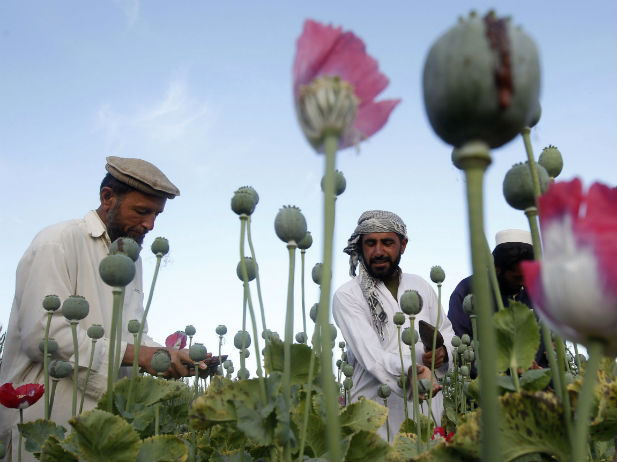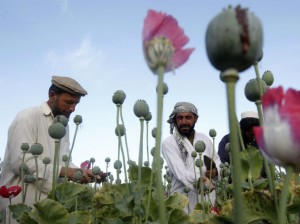
“Red Team” Exercise: The Insurgency/Crime Nexus
In his visit Wednesday to the American Security Project, National Journal senior defense correspondent James Kitfield discussed national security strategy as the balancing act of managing risk with resources. Given the U.S.’s present fiscal climate and a professed commitment by the administration to be more selective in conducting counterinsurgency campaigns in the near future, a deliberately-devised strategy has never been more necessary.
With the knowledge that defense budgets will likely be cut, military operations will be scaled down, and the U.S. will have to choose how it “does less with less,” how might insurgents, terrorists, or other non-state actors seek to maximize their gains in the ensuing environment? If U.S. adversaries were to conduct a hypothetical “red-team” exercise, it is plausible one of the conclusions they might come to is to use the growing nexus between insurgency, terrorism, and crime to conduct enduring “hybrid wars” against America.
In and of itself, this strategy, if adopted by adversaries, appears to be a simple recommendation. Yet when examined more closely, it would allow various groups with a common enemy to leverage their respective specialties for mutual benefit. By combining elements including financing, logistics, and arms trading as discussed in a report recently authored by ASP fellow Ashley Boyle, non-state actors could plausibly deal America a series of coordinated blows. Ever seen flies harass a farm animal, buzzing around its head while avoiding the flickering tail? Though “death by 1,000 pinpricks” might be hyperbole, a coordinated effort could have that sort of nuisance effect on the American defense behemoth.
One vulnerability that should be of particular concern to national security officials is the rising nexus between insurgency and crime, particularly illicit narcotics due to the immense profit margins available through their transport and sale on the black market. This issue should be of specific concern because it challenges the traditional tendency of federal bureaucracies to silo their activities. For example, a recent article by Wired’s Spencer Ackerman details the complexity of addressing the growth and interdiction of narcotics, including the growing opportunity for security contractors to etch out a piece of the market.
As the accounts that fund U.S. counternarcotics missions are divided between State, DoD, DEA, and the intelligence community, there are distinct possibilities for both redundancy and mission gaps. In a recent interview I conducted with a former DEA intelligence official, the difficulty U.S. agencies experience in dealing with hybrid threats from various non-state actors was mentioned as a serious problem. By neatly dividing adversaries into categories as terrorists, rebels, insurgents, growers, traffickers, etc., we confine our agencies’ ability to deal with them effectively when they commingle. This is a deficiency in our national defense that lends itself to exploitation.
Another reason the insurgency-crime nexus should be of particular concern is due to the ability of determined adversaries to leverage the global market, using American purchasing power to its detriment. Recent reports on the growth of poppies in Afghanistan suggest that land use for that purpose is up roughly 20% within the past year, largely driven by a global rise in price. Though price spikes should theoretically reduce global demand, in practice they simply contribute to disproportionate usage patterns among more affluent societies. The UNODC’s 2012 World Drug Report highlights elevated usage of the most expensive drugs – ecstasy, synthetic heroin, and cocaine – in the United States, Western Europe, and Australia. This is another critical piece of information potential adversaries could use to turn the market forces of globalization around in an asymmetric campaign against the United States.
The link between illicit narcotics and instability in Afghanistan is of concern to the international community as a whole, as indicated from statements by Russian and Indian sources. Regardless of whether narcotics growers harbor innate anti-American sentiments, they will be more likely to engage insurgents for transport or protection when illicit substances (or the crops to make them) provide them the best chance at livelihood. This is global problem through the developing world, but most widely noted in Afghanistan and in South and Central America.
Hemispheric security addressing transnational crime and drugs has been identified by the U.S. defense establishment as a priority. This is reflected in diplomatic efforts such as the Merida Initiative and the Central American Regional Security Initiative that aim to link elements of military operations, political stability, and law enforcement. Nonetheless, multilateral geographic partnerships or bilateral relationships (i.e. U.S./Afghanistan) are often not expansive enough to effectively address the insurgency/crime nexus due to its global component.
An increasing push needs to occur at the international level to use institutions like the UN and WTO to drive cooperation against hybrid security threats. Global crime will never be eliminated, but it should be proactively addressed – with specific capabilities established to combat it – before adversaries become adept at working together to undermine global markets and security arrangements.







[…] “Red Team” Exercise: The Insurgency/Crime Nexus […]